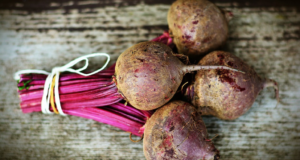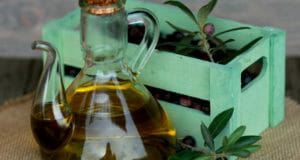Fall is the time to prepare for a healthy winter. Fall (and spring) also are the best times to gather roots to be used for healing. Always be sure to leave plenty of plants for future growth. If the roots are large, you may just expose a portion of a root and cut off what you need. Never harvest endangered or at-risk plants. Contact your state government or United Plant Savers if you are not sure if a plant is at-risk or endangered. Grow your own plants for harvesting whenever possible.
To harvest roots, simply dig up the roots of selected plants and allow them to dry in a dry dark place. You can clean them and lay them on a screen for drying purposes. Turn them occasionally. Drying times depend on the moisture content and size of the plant material. Large roots may benefit from careful drying in a dehydrator or a gas oven with just the pilot light on. I keep my roots whole until needed as they retain more potency that way.
You may choose to tincture fresh roots. If you grow or gather echinacea, tincture the roots now. I prefer to cut the roots into small pieces. Use grain alcohol if it is available as the healing compounds in echinacea require a high alcohol concentration for maximum extraction. If grain alcohol is unavailable use the highest proof vodka that you can obtain. Let the roots sit for several weeks minimum. Shake the container daily. I actually prefer to simply leave the roots in the alcohol indefinitely when I am preparing tinctures for my own use. The tinctures become very potent that way.
Burdock root can be difficult to dig as the roots are often large and deep. They can be prepared in the same way as echinacea. I like to use burdock as a general tonic. It is one of the best herbs to enhance the health of the liver and the digestive tract. You may use a lower concentration of alcohol to preserve burdock than you would to use echinacea. It may also be preserved by covering the root in apple cider vinegar. Keep dried burdock on hand for making into teas.
Fall flowers remain in bloom in some areas. Ideally, I harvest leaves and plant parts above the ground earlier in the year for maximum potency, However identification of the plants may be easier now. In many areas, you may still gather these showy plants for healing purposes.
New “Survival Herb Bank” Gives You Access to God’s Amazing Medicine Chest
Joe Pye weed (Eupatorium purpurea) has beautiful showy mauve colored flowers that bloom in autumn. The name Joe Pye derived from several legends. I believe that the most likely one is that Joe Pye was a settler who taught other settlers Native American healing methods. Joe Pye Weed was historically used to induce sweating and alleviate fever from typhus. The plant has been used to relieve gall bladder and urinary ills. I consider it to be one of the best herbs to treat kidney stones and as a diuretic. It is a urinary system tonic. I use it in formulas to relieve cystitis. Joe Pye has also been used to treat arthritis and gout. Current European studies show that Joe Pye contains immunity-boosting constituents. The whole plant can be dried and used for healing.
The other day, I was walking through a field when my nose because a bit stuffy so I picked and nibbled on a couple of goldenrod (Solidago) leaves. Within 20 minutes, I felt better. There are hundreds of species of goldenrod. Some taste better than others. The poor goldenrod, with its glorious yellow tops, is often blamed for causing hay fever. It is innocent. The more likely culprit is the less showy ragweed that often grows alongside the goldenrod. I am always reassured to see that there is a Power that knew enough to put the “cure” right next to the culprit. My favorite goldenrod is the “Sweet Goldenrod.” It really does have a sweet, aromatic flavor. Goldenrod is also useful for urinary tract ills. I harvest the leaves for healing purposes. You may tincture or dry them for future use.
Maple was used in combination with other herbs by Native Americans topically to treat rashes, hives, measles, cuts, sores, bruises and pain. Red maple and box elder bark were combined for use as eyewash and to treat gastrointestinal complaints. Maple has been used to kill and expel worms. Native Americans used the roots and bark of maple to ease backache, and for post-menopausal problems. The ingredients were probably soothing as they are astringent, antiseptic, and relaxing. Maple has historically been used to reduce pain in the liver and spleen area. It has been used as a cough remedy, expectorant and to promote appetite.
If you gather bark, never gird a tree. Girding will kill the tree. Girding is taking bark that encircles the entire circumference of the tree. The best way to obtain bark is to cut it from recently downed limbs and trees. If you burn wood, such as maple for heat, harvest some of the bark for healing purposes. Dry the bark in the same manner as you would dry roots. It may be tinctured as well.
Now is a perfect time to go out and enjoy the clear crisp autumn air while you harvest your fall herbs. Only take as much as you anticipate using. Gathering fall herbs is an excellent family activity. Enjoy!
Disclaimer: The information in this article is for educational purposed only. No claim is made to diagnose, treat, alleviate or mitigate any health condition or illness.
 Off The Grid News Better Ideas For Off The Grid Living
Off The Grid News Better Ideas For Off The Grid Living





